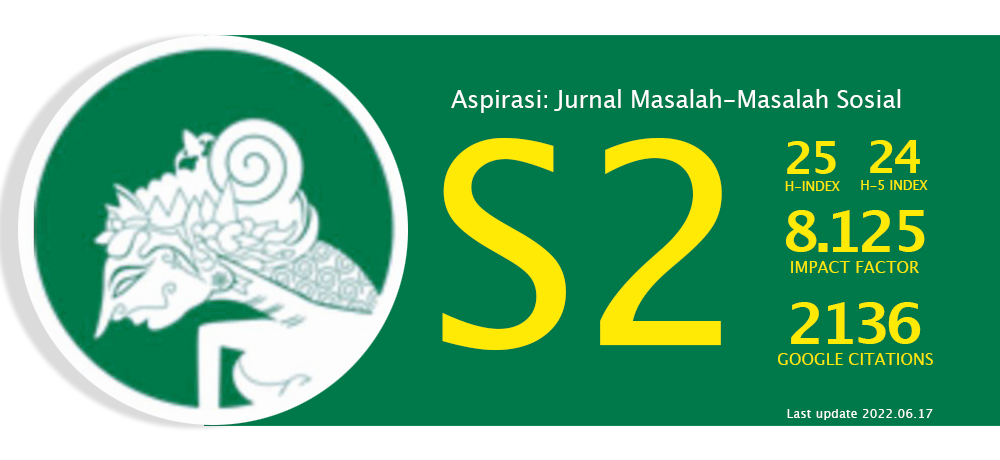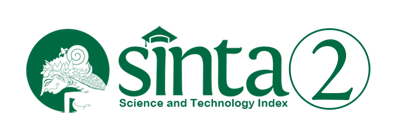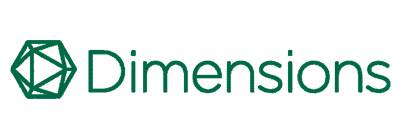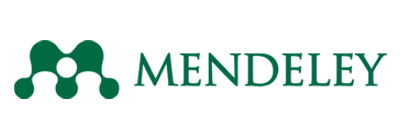Pengaruh Jumlah Jam Kerja Ibu pada Perilaku Pemberian ASI
Abstract
Breastfeeding is an important part of a child’s growth and development, especially during its golden age of the first 1,000 days. Physiologically, colostrum, which is formed in breast milk, is able to build infants’ immunity. Breastfeeding has been protected by Law No 36 of 2009, which instructs that every mother has to fulfill the right of their baby to get exclusive breastfeeding for six months. However, the target set by the government, which is 80 percent, has not been met. This study examines the relationship between a mother’s working hours and breastfeeding behavior using a national scale sample, the National Socioeconomic Survey (Susenas) of 2017. This study uses a quantitative approach with a unit of analysis of infants aged 6–23 months, as many as 26,066 from working and non-working mothers and will be analyzed using multinomial logistic regression. The results show that mothers with longer working hours had a lower probability of exclusive breastfeeding or any breastfeeding. Therefore, Commission IX needs to discuss the Draft Law on Mother and Child Welfare which regulates support for working mothers who breastfeed.
Abstrak
Pemberian air susu ibu (ASI) menjadi bagian penting dalam momentum tumbuh kembang anak terutama dalam periode emas yaitu 1.000 hari pertama kehidupan anak karena secara fisiologis, kolostrum yang terbentuk pada ASI mampu membangun imunitas pada bayi. Praktik pemberian ASI telah dilindungi oleh UndangUndang No. 36 Tahun 2009 yang mengamanatkan agar setiap ibu memenuhi hak bayi untuk mendapatkan ASI eksklusif selama enam bulan. Akan tetapi, target sebesar 80 persen yang ditetapkan pemerintah belum dapat terpenuhi. Penelitian ini bertujuan untuk menguji bagaimana hubungan jumlah jam kerja ibu pada perilaku pemberian ASI dengan menggunakan sampel skala nasional yaitu Survei Sosial Ekonomi Nasional (Susenas) Tahun 2017. Penelitian ini menggunakan pendekatan kuantitatif dengan unit analisis bayi berumur 6–23 bulan sebanyak 26.066 baik dari ibu yang bekerja maupun tidak bekerja dan akan diuji menggunakan regresi logistik multinomial. Hasil yang didapatkan adalah terbukti bahwa ibu yang memiliki jumlah jam kerja lebih tinggi memiliki peluang lebih kecil untuk menyusui eksklusif maupun menyusui namun tidak eksklusif dibandingkan tidak menyusui sama sekali. Oleh karena itu, Komisi IX perlu segera melakukan pembahasan Rancangan Undang-Undang tentang Kesejahteraan Ibu dan Anak yang di dalamnya mengatur dukungan untuk ibu pekerja yang menyusui.
Keywords
Full Text:
PDFReferences
Afriana, N. (2004). Analisis praktik pemberian asi eksklusif pada ibu bekerja di instansi pemerintah di DKI Jakarta tahun 2004 [Tesis]. Universitas Indonesia.
Amitay, E. L., & Keinan-Boker, L. (2015). Breastfeeding and childhood leukemia incidence: A meta-analysis and systematic review. Jama Pediatrics, 169(6), 1–9. https://doi.org/10.1001/jamapediatrics.2015.1025
Auerbach, K. G. (1990). Sequential and simultaneous breast pumping: A comparison. International Journal of Nursing Studies, 27(3), 257–265. https://doi.org/10.1016/0020-7489(90)90040-p
Badan Pusat Statistik. (2018). Profil kesehatan ibu dan anak 2018. Badan Pusat Statistik.
Bai, D. L., Fong, D. Y. T., & Tarrant, M. (2015). Factors associated with breastfeeding duration and exclusivity in mothers returning to paid employment postpartum. Maternal & Child Health Journal, 19(5), 990–999. https://doi.org/10.1007/s10995-014-1596-7
Baker, T. (2016). . Burden of community diarrhoea in developing countries. The Lancet, 4(1), e25. https://doi.org/10.1016/S2214-109X(15)00247-8
Balogun, O. O., Dagvadorj, A., Anigo, K. M., Ota, E., & Sasaki, S. (2015). Factors influencing breastfeeding exclusivity during the first 6 months of life in developing countries: A quantitative and qualitative systematic review. Maternal & Child Nutrition, 11(4), 433–451. https://doi.org/10.1111/mcn.12180
Boyle, E. H., Gangestad, G., King, M. L., & Sarkar, S. (2018, April). Women's labor participation and breastfeeding in three African countries [Paper]. In Population Association of America Meetings. Denver, Colorado. https://paa.confex.com/paa/2018/mediafile/ExtendedAbstract/Paper22712/Working%20women%20%26%20breastfeeding%20PAA%202018.04.06.pdf
Cusick, S., & Georgieff, M. K. (2016). The role of nutritions in brain development: The golden opportunity of the "First 1000 days". The Journal of pediatrics, 175, 16–21. https://doi.org/10.1016/j.jpeds.2016.05.013
Fein, S. B., Mandal, B., & Roe, B. E. (2008). Success of strategies for combining employment and breastfeeding. Pediatrics, 122 Suppl 2, 56–62. https://doi.org/10.1542/peds.2008-1315g
Flaherman, V. J., Chan, S., Desai, R., Agung, F. H., Hartati, H., & Fitra, Y. (2018). Barriers to exclusive breast-feeding in Indonesian hospitals: A qualitative study of early infant feeding practices. Public Health Nutrition, 21(4), 2689–2697. https://doi.org/10.1017/S1368980018001453
Giglia, R., Cox, K., Zhao, Y., & Binns, C. W. (2015). Exclusive breastfeeding increased by an internet intervention. Breastfeeding Medicine, 10, 1–6. https://doi.org/10.1089/bfm.2014.0093
Hawkins, S. S., Griffiths, L. J., Dezateux, C., & Law, C. (2007). The impact of maternal employment on breastfeeding duration in the UK millennium cohort study. Public Health Nutrition, 10(9), 891–896. https://doi.org/10.1017/S1368980007226096
Heck, K. E., Braveman, P., Cubbin, C., Chavez, G. F., & Kiely, J. L. (2006). Socioeconomic status and breastfeeding initiation among California mothers. Public Health Reports, 121(1), 51–59. https://doi.org/10.1177/003335490612100111
Kementerian Kesehatan RI. (2014). Situasi dan analisis asi eksklusif. Pusat Data dan Informasi Kementerian Kesehatan RI.
Kitano, N., Nomura, K., Kido, M., Murakami, K., Ohkubo, T., Ueno, M., & Sugimoto, M. (2016). Combined effects of maternal age and parity on successful initiation of exclusive breastfeeding. Preventive Medicine Reports, 3(2016), 121–126. https://doi.org/10.1016/j.pmedr.2015.12.010
Lamberti, L. M., Walker, C. L., Noiman, A., Victoria, C., & Black, R. E. (2011). reastfeeding and the risk for diarrhea morbidity and mortality. BMC Public Health, 11(Suppl 3), 1–12. https://doi.org/10.1186/1471-2458-11-S3-S15
Le, Q.-N. T., Phung, K.-L., Nguyen, V.-T. T., Anders, K. L., Nguyen, M.-N., Hoang, D.-T. T., Bui, T.-T. T., Nguyen, V.-C. V., Thwaites, G. E., Simmons, C., & Baker, S. (2018). Factors associated with a low prevalence of exclusive breastfeeding during hospital stay in urban and semi-rural areas of Southern Vietnam. Int Breastfeed J 13, 13(2018), 1–19.
Lindberg, L. D. (1996). Trends in the relationship between breastfeeding and postpartum employment in the United States. Social Biology, 43(3-4), 191–202. https://doi.org/10.1080/19485565.1996.9988923
Liu, J., Shi, Z., Spatz, D., Loh, R., Sun, G., & Grisso, J. (2013). Social and demographic determinants for breastfeeding in a rural, suburban, and city area of South East China. Contemporary Nurse, 45(2), 234–243. https://doi.org/10.5172/conu.2013.45.2.234
Mandal, B., Roe, B. E., & Fein, S. B. (2010). The differential effect of full-time and part-time work status on breastfeeding. Health policy (Amsterdam, Netherlands), 97(1), 79–86. https://doi.org/10.1016/j.healthpol.2010.03.006
Mikami, F. C., Francisco, R. P., Rodriguez, A., Hernandez, W. R., Zugaib, M., & Brizot, M. d. L. (2018). Breastfeeding twins: Factors related to weaning. Journal of Human Lactation, 34(4), 749–759. https://doi.org/10.1177/0890334418767382
Ogbuanu, C., Glover, S., Probst, J., Hussey, J., & Liu, J. (2011). Balancing work and family: Effect of employment characteristics on breastfeeding. Journal of human lactation: official journal of International Lactation Consultant Association, 27(3), 225–295. https://doi.org/10.1177/0890334410394860
Ogunlesi, T. A. (2010). Maternal socio-demographic factors influencing the initiation and exclusivity of breastfeeding in a Nigerian semi urban setting. Maternal and Child Health Journal, 14(3), 459–465. https://doi.org/10.1007/s10995-008-0440-3
Pilkauskas, N. V. (2014). Breastfeeding initiation and duration in coresident grandparent. Maternal and Child Health Journal, 18(8), 1955–1963. https://doi.org/10.1007/s10995-014-1441-z
Rosyadi, D. N. (2016). Hubungan antara pengetahuan ibu bekerja, jam kerja ibu dan dukungan tempat kerja dengan keberhasilan pemberian asi eksklusif di wilayah kerja Puskesmas Banyudono I [Skripsi]. Universitas Muhammadiyah Surakarta.
Ryan, A. S., Zhou, W., & Arensberg, M. B. (2006). The effect of employment status on breastfeeding in United States. Women's Health Issues, 16(5), 243–251. https://doi.org/10.1016/j.whi.2006.08.001
Santacruz-Salas, E., Aranda-Reneo, I., Hidalgo-Vega, A., Blanco-Rodriguez, J. M., & Segura-Fragoso, A. (2018). The economic influence of breastfeeding on the health cost of newborns. Journal of Human Lactation, 35(2), 340–348.
Smith, J., & Forrester, R. (2013). Who pays for the health benefits of exclusive breastfeeding? An analysis of maternal time costs. Journal of Human Lactation, 29(4), 547–555. https://doi.org/10.1177/08903344134954
Spitzmueller, C., Zhang, J., Thomas, C. L., Wang, Z., Fisher, G. G., Matthews, R. A., & Strathearn, L. (2018). Got milk? Workplace factors related to breastfeeding among working mothers. Journal of Organizational Behavior, 37(5), 692–718. https://doi.org/10.1002/job.2061
Spitzmueller, C., Zhang, J., Thomas, C. L., Wang, Z., Fisher, G. G., Matthews, R. A., & Strathearn, L. (2018). Identifying job characteristics related to employed women’s breastfeeding behaviors. Journal of Occupational Health Psychology, 23(4), 457–470. https://doi.org/10.1037/ocp0000119
Tang, K., Liu, Y., Meng, K., Tan, S., Liu, Y., & Chen, J. (2019). Breastfeeding duration of different age groups and its associated factors among Chinese women: A cross sectional study. International Breastfeeding Journal, 14(19), 1–8. https://doi.org/10.1186/s13006-019-0212-2
Tomfohrde, O. J., & Reinke, J. S. (2016). Breastfeeding mothers' use of technology while breastfeeding. Computers in Human Behavior, 64, 556–561. https://doi.org/10.1016/j.chb.2016.07.057
United Nations. (2019, July 1). Global progress in satisfying the need for family planning. Population Factsheets, 2019(3). Retrieved December 16, 2022, from https://www.un.org/development/desa/pd/content/global-progress-satisfying-need-family-planning
Uruakpa, F., Ismond, F., & Akobundu, E. (2002). Colostrum and its benefits: A review. Nutrition Research, 22(6), 755–767. https://doi.org/10.1016/S0271-5317(02)00373-1
Valizadeh, S., Hosseinzadeh, M., Mohammadi, E., Hassankhani, H., Fooladi, M. M., & Schmied, V. (2017). Addressing barriers to health experiences of breastfeeding mothers after returning to work. Nursing and Health Sciences, 19(1), 105–111. https://doi.org/10.1111/nhs.12324
World Health Organization. (2014). Global nutrition targets 2025 breastfeeding [Policy Brief]. World Health Organization. https://apps.who.int/iris/handle/10665/149022
DOI: https://doi.org/10.46807/aspirasi.v13i2.3242
Refbacks
- There are currently no refbacks.







